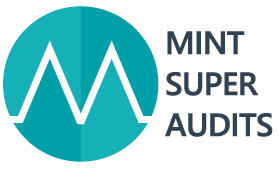In the world of Self-Managed Superannuation Funds (SMSFs), it is important for trustees, accountants, and financial advisors to have a clear understanding of the concept of Part 8 associates and their implications. A Part 8 associate is someone who has a close relationship with an SMSF member and can potentially impact the decisions and actions of the fund. By identifying these associates, it becomes easier to determine whether the member is acting in the capacity of a trustee. Today, we will explore the different types of Part 8 associates, as well as the distinction between related trusts and related companies.

Table of Contents
- Understanding Part 8 Associates
- Understanding Related Trusts and Related Companies
- About Us
- Frequently Asked Questions (FAQ)
Understanding Part 8 Associates
The definition of a Part 8 associate includes various individuals and entities who have a direct or indirect connection with an SMSF member. These associates are crucial to consider as they can influence or be influenced by the actions of the member and, consequently, impact the fund as a whole.
Some examples of Part 8 associates include:
- relatives of the member, such as business partner, parents, siblings, or children, as well as their spouses.
- any other member of a small fund (six or fewer members) that the person is a part of is considered a Part 8 associate.
- individual trustees or directors of the corporate trustee of the fund.
- Partners of the member or partnerships in which the member is a partner also fall under the category of Part 8 associates.
- A company that is sufficiently influenced by, or in which a majority voting interest is held by a Part 8 associate member.
Furthermore, trustees of trusts in which the member has control are also considered Part 8 associates. This control can be established through various means, such as having a fixed entitlement to a majority of the capital or income of the trust, or the ability to remove or appoint trustees.
Understanding Related Trusts and Related Companies
When it comes to related parties of an SMSF, we primarily refer to related trusts and related companies. These entities come into play when analyzing the potential impact they may have on the fund.
A related trust is defined as a trust that is controlled by the member of the SMSF. Control can be established in several ways. For instance, if a group of individuals or entities has a fixed entitlement to more than 50% of the capital or income of the trust, it would be considered a related trust. Additionally, if the trustee or a majority of the trustees of the trust is accustomed or obligated to act according to the directions, instructions, or wishes of a group related to the member, it would also be categorized as a related trust.
On the other hand, a related company refers to a company that is influenced by an SMSF member or their Part 8 associates. This influence can be exhibited if the company or a majorityof its directors is under an obligation or accustomed to acting according to the directions, instructions, or wishes of the member or their associates. Furthermore, if the member or their associates hold a majority voting interest in the company (more than 50%), it would also be considered a related company.
Now, let's dive into an example to illustrate these concepts. Consider the scenario of the Bedrock Unit Trust. This trust has been established where two separate family groups, with no other connection besides friendship, each own 50% of the issued units. The units provide a fixed entitlement to the capital and income of the trust.
In this case, the Bedrock Unit Trust does not qualify as a related trust for either SMSF. Neither SMSF has a fixed entitlement to more than 50% of the capital or income of the trust since both own an equal share of 50%. Additionally, the trust is not controlled by either SMSF in a manner described in Section 70E(2) of the Superannuation Industry (Supervision) Act 1993.
Therefore, the units held by the separate family groups in the Bedrock Unit Trust do not constitute in-house assets of either SMSF. As a result, there are no implications or restrictions in terms of the SMSF's investments or compliance requirements.

About Us
At MintSuper, we understand that managing an SMSF comes with various responsibilities and challenges. Our team of highly skilled and experienced auditors is dedicated to delivering top-tier services tailored to your specific SMSF needs. We stay up to date with the latest regulatory changes and industry best practices, ensuring that your fund meets all compliance requirements. Our meticulous approach to auditing enables us to identify any potential issues or areas of improvement, providing you with valuable insights to enhance your fund's performance.
So, contact us today, to learn more.Frequently Asked Questions (FAQ)
Here are some common questions about SMSFs and related trusts and companies:

Q: What is a Part 8 associate in relation to an SMSF member? A Part 8 associate is someone who has a close relationship with an SMSF member and can potentially influence or be influenced by the decisions and actions of the fund. This includes relatives, partners, trustees of trusts, and members of the same small fund.
Q: What is the difference between a related trust and a related company? A related trust is a trust that is controlled by the SMSF member, either through a fixed entitlement to capital or income or by influencing the trustees. A related company, on the other hand, is a company that is sufficiently influenced by the member or their associates, typically through majority voting interests or directing the actions of the company's directors.
Q: Is the Bedrock Unit Trust a related trust of either SMSF? No, the Bedrock Unit Trust does not qualify as a related trust for either SMSF. Since each SMSF owns an equal share of 50% in the trust and there is equal representation in decision-making, neither SMSF has a fixed entitlement to more than 50% of the trust's capital or income.




